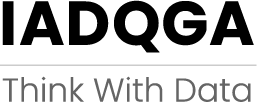“Critical Thinking” vs “Advance Critical Thinking”
Critical Thinking
“Critical thinking” is the ability to utilize data/statistical/information literacy along with analysis, interpretation and evaluation to support organizational data driven decision making (DDDM).
Organizations of all sizes and for profit and not-for- profit are consistently trying to improve their “critical thinking” capabilities. The term “critical thinking” is often used but what does it mean and how can it be improved upon? The problem is that there is no generally accepted definition for “critical thinking”.
Functions throughout organizations such as Finance, Information Technology, Supply Chain Management, etc. are accelerating their roles from value “stewards” to value “creators”. This migration can’t occur without an accelerated and expanded focus on creating deeper “critical thinking” capability within the organization.
Strong and continually expanding critical thinking skills are required for strong DDDM and problem solving skills that move a company forward.
One way of defining “critical thinking” is through the attributes often associated with “critical thinking”. One list of “critical thinking” attributes is as follows:
“Critical thinking” is a manner of thinking that employs curiosity, creativity, skepticism, analysis and logic where:
Curiosity means wanting to learn
Creativity means viewing information from multiple perspectives
Skepticism means maintaining a “trust but verify” mind set
Analysis means systematically examining and evaluating evidence, and
Logic means reaching well-founded conclusions
(Source – Strategic Finance – “Improving Critical Thinking Through Data Analysis” – Kurt F. Reding & Carolyn Newman)
While some individuals have a greater level of natural aptitude in these areas, everyone can either learn and/or enhance their capabilities in these areas.
“Data analysis” and “critical thinking” skills are interdependent. Data analysis requires you to think critically by probing, connecting disparate facts, synthesizing, etc. Likewise, “critical thinking” is enabled by the ability to think analytically and apply tools to help extract insights and actionable information from data”.
Advanced Critical Thinking
The ability to achieve “advanced critical thinking” is difficult and will probably be an aspirational goal for most organizations at this time.
The IADQGA process of “advanced critical thinking” builds on conventional “critical thinking” but adds significant new additional attributes of data (unstructured data and IOT data) to meet the needs of organizational digitization. The IADQGA approach to “advanced critical thinking” provides the basis for advanced use and deployment of artificial intelligence (AI) and machine learning (ML).
The IADQGA process integrates the rapid growth of Internet of Things (IOT) devices (sensors & controllers), unstructured data and at the edge computer analysis of this data to accelerate and maintain DDDM as part of the “advanced critical thinking” process. This integration of real time data capture and analysis drastically improves the quality and reduce the cycle time for “advanced critical thinking”.


